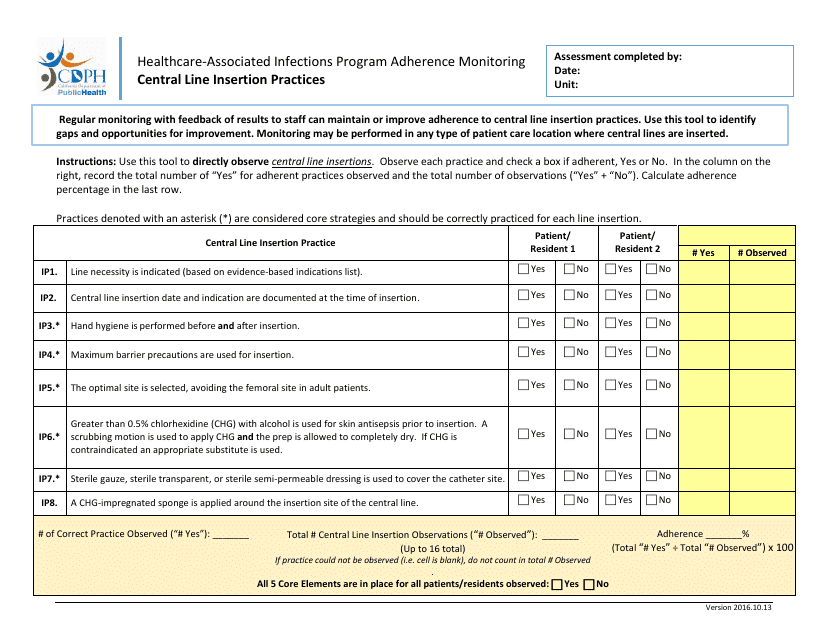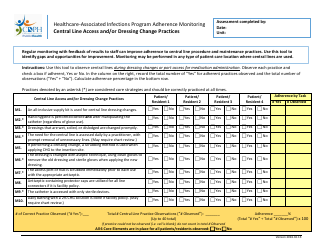Central Line Insertion Practices - California
Central Line Insertion Practices is a legal document that was released by the California Department of Public Health - a government authority operating within California.
FAQ
Q: What are central line insertion practices?
A: Central line insertion practices refer to the procedures and protocols for inserting central lines, also known as central venous catheters, into the veins of patients.
Q: Why are central lines inserted?
A: Central lines are inserted to allow for the administration of medications, fluids, and nutrition, as well as for monitoring purposes.
Q: Who performs central line insertions in California?
A: In California, central line insertions are typically performed by trained healthcare professionals, such as doctors, nurses, or specialized technicians.
Q: Are there specific guidelines for central line insertions in California?
A: Yes, there are specific guidelines and recommendations for central line insertions in California, which are based on national standards and best practices.
Q: What are the infection prevention measures for central line insertions?
A: Infection prevention measures for central line insertions include hand hygiene, sterile barrier precautions, proper skin preparation, and the use of antiseptic solutions.
Q: What are the complications associated with central line insertions?
A: Complications of central line insertions can include infection, bleeding, blood clots, pneumothorax (collapsed lung), and damage to nearby structures.
Q: How can central line-associated bloodstream infections be prevented?
A: Prevention measures for central line-associated bloodstream infections include proper hand hygiene, sterile insertion techniques, daily assessment of the need for the line, and regular dressing changes.
Q: Is there a reporting system for central line-associated bloodstream infections in California?
A: Yes, California has a reporting system for central line-associated bloodstream infections, which helps track and monitor these infections to improve patient safety.
Form Details:
- Released on October 13, 2016;
- The latest edition currently provided by the California Department of Public Health;
- Ready to use and print;
- Easy to customize;
- Compatible with most PDF-viewing applications;
- Fill out the form in our online filing application.
Download a printable version of the form by clicking the link below or browse more documents and templates provided by the California Department of Public Health.



